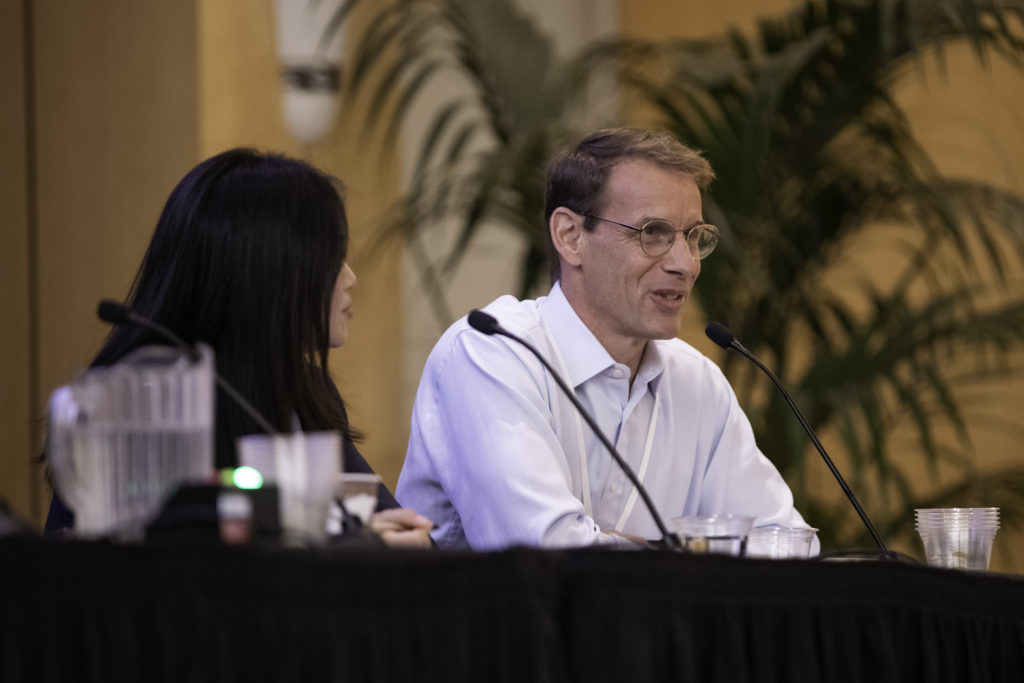Published: 09/20/2019
By Jody Berger
The Planetary Health Alliance, a consortium of universities and non-governmental organizations, is—in the words of its founder—“a community forged of urgency.”
“Our house is on fire,” said Dr. Sam Myers, who founded and directs the Planetary Health Alliance, to open the 2019 Planetary Health Annual Meeting, held at Stanford University, Sept. 4 – 6. “Our natural systems are starting to crumble around us. And we are awakening to the very real and immediate threat this poses to our own health and that of future generations.”

Planetary Health is a growing field of study that emphasizes the connection between human health and the health of our planet. It is, by necessity, an interdisciplinary field.
“We need all hands on deck,” said Michele Barry, the Director of Stanford’s Center for Innovation in Global Health, which co-sponsored the meeting with the Planetary Health Alliance and the Woods Institute for the Environment. “To really get your arms around an issue like this—one that’s so big, so fast-moving and impacts every living thing on the planet—we need experts from a variety of sciences and medical specialties to help get the hard facts and drill down into the hard science of what is happening and what can be done.”
Engineers, economists, physician-scientists and dozens of other academic disciplines—nearly 400 people from 40 countries—came to Stanford to focus on solutions. At 42 watch parties in 16 countries, people gathered to watch the livestream. And hundreds more watched the recordings later as the videos remain online.
The meeting opened with words and prayers from indigenous leaders Be’sha Blondin, an elder from the Sahtu Region of the North West Territories, and Kanyon CoyoteWoman, cultural representative of the Indian Canyon Mutsun Band of Costanoan Ohlone People. And Nainoa Thompson, the president of the Polynesian Voyaging Society, closed the event by pointing out what can be learned from other ancestral traditions that preserved their relationships with nature.

At Stanford, the Center for Innovation has made Planetary Health one of its three primary areas of focus. And the University at large, as part of its long-range planning, has committed to a Climate Solutions initiative, which aims to help our ecosystems and society thrive by accelerating the development of zero-carbon technologies, developing translational climate and energy research, and delivering innovative and meaningful regional solutions. To achieve this, all seven schools will work together.
“I’m struck by how in the health sciences there’s a tradition of moving seamlessly from diagnosis to treatment,” said Chris Field, Director of the Woods Institute. “In the environmental sciences, we’ve tended to view the transition to treatment as too vast, too complicated and too expensive and there’s a tremendous amount that the environmental community can learn from the health community about linking those to agendas.”
At the Annual Meeting, the activist community joined the conversation to discuss how to build a movement. And Jane Goodall, the legendary primatologist and anthropologist, sent a statement by video inspiring the global community to work together to protect the planet, and in turn, human health.
At the Stanford and at the watch parties around the world, people stood ready to follow her direction. “If we can combine the knowledge and the science that so many of you are generating with social mobilization and the kinds of collective action that are springing up everywhere,” Myers said, “there’s no reason why our future cannot be a very bright one.”
